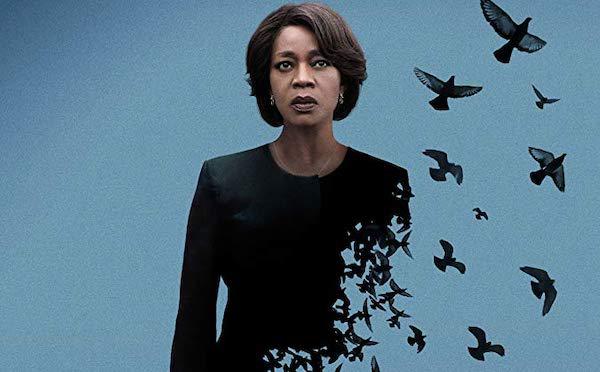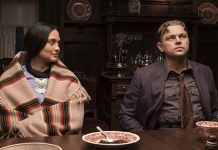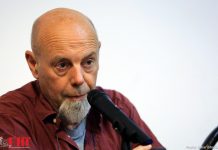SALOUMEH FARHADIAN ARTNEWSPRESS: Written and directed by Chinonye Chukwu, the intensely moving drama Clemency follows prison warden Bernadine Williams (Alfre Woodard, in one of the best performances of the year), who has spent years carrying out death row executions that have taken their toll on her life and her marriage. Before she must carry out yet another execution of inmate Anthony Woods (Aldis Hodge), Bernadine finds herself confronting the emotional and psychological damage the job has done, as she figures out what that means for her future.
At the film’s Los Angeles press day, Collider got the opportunity to sit down and chat with co-stars Woodard and Hodge about why they wanted to take on these challenging roles, the difficulty of shooting the execution scenes, and what happened when they discussed this tough, important movie with audiences. Hodge also talked about his upcoming movie The Invisible Man and his Showtime series City on a Hill while Woodard talked about the experience of shooting the epic Apple TV+ series See.
Collider: You’re both so terrific in this film. It’s like watching a master class in acting. When this project came your way, did you jump at the chance to do something like this?
ALFRE WOODARD: Oh, yeah.
ALDIS HODGE: Absolutely, yeah.
WOODARD: Most people would say, “Oh, that’s so hard. I don’t know.” And I’m like, “Send us.”
HODGE: As an actor, your main ambition should be to do a role that’s gonna push you outside of your comfort zone. I want to learn something about myself. That’s how I pick projects, nowadays. I ask myself, “How can I grow, and who can help me grow?” What this was, basically, was growth.
Did you also have conversations with your director, Chinonye Chukwu, to make sure that it would be presented in a way that you also were on the same page with?
WOODARD: That’s what drew me in, and all of the actors. She was a person who had a creative intelligence and a commitment to taking the subject matter seriously and sincerely. She changed her life, to tell this story. She moved to Ohio, she worked in the prison system there, and she worked on countless clemency cases. And then, she talked about her cinematic influences and how she saw it, in design and pacing. So, it was the conversations that made me say, “I’m gonna go with you.” We might say yes to the subject matter, but I wanted to go with her on the subject matter.

HODGE: My first couple of conversations with Chinonye were really about learning how she was inspired and why she was inspired to tell this story. That set up the framework for how I was able to view what it was we were about to get into. She told me about her extensive work within the prison system, and that’s how I knew I was dealing with somebody who’s really dedicated. Not only did she write a brilliant script, but it came from a place of real passion for the potential of what it had to say and the effect of what the art was. So, after you get that, you know that you’re not dealing with somebody who is trying to take the subject matter lightly or frivolously. When you’re dealing with somebody who’s deeply connected to the purpose of it, then you can’t help but trust, at that point. Really, it just comes down to trust. Everything we do in this business is risk and trust. You can be with the biggest studio on the biggest budge film, and it can still turn out to be something that is not entirely the greatest. And you can have two dollars and some really dedicated people, and make the greatest masterpiece, ever. It depends on where people’s hearts are. That supplements and roots your trust and faith in it. So, for me, it was coming to understand that Chinonye was super dedicated because she was experienced and educated. It’s a different value that you add. And then, just look at the casting. At first, I had only heard that Alfre Woodard was on it and I was like, “It’s Alfre Woodard, so yes. If you want me to play an extra, all right. I’m with you.” But then, after that, you hear about Wendell Pierce, Richard Schiff, and Danielle Brooks, and you’re like, “All of these major talents are coming to the same place for the same reason. There’s gotta be something special here.” There were so many people that really have brilliant bodies of work and are fantastic actors, and they’re coming to this project for a reason. I just wanted to be a part of that reason.
Obviously, when you do something like this, you know that, at some point, you’ll be shooting an execution scene. What were those days like?
WOODARD: We talk about how acting is listening and responding. Our death chambers were absolutely specifically like a death chamber. It was replicated, to the point that it was like walking into a space where people have been lynched, like the National Memorial to Peace and Justice that Bryan Stevenson has given the nation. So, we walk in there and we know what’s gonna happen, in each execution. Everybody just has to learn the choreography. The strapping down and the administering of drugs has to be precisely right. All of the actors are doing that thing. We’re not pretending. We’re recreating, so that our viewer can be right there, so the next time they hear that somebody is being executed, they know what it is. We had a man who has overseen more executions than anybody in the world, who then became a big proponent against the death penalty. His name is Allen Ault, and they did a BBC documentary on him. He choreographed our execution scene. All Chinonye had to do was roll camera because we were walking on people’s souls, at that point. You just had to keep breathing and not pass out during those days. They had a therapist on set. The first execution scene, we started setting it up and two of the big guys that were in the scene said, “I can’t do it. I’ve gotta go.” They got triggered. So, we lost people.
Aldis, what was it like for you to experience?
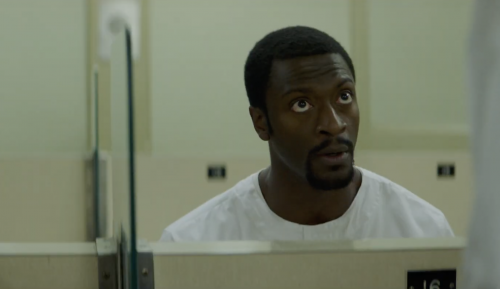
HODGE: When you are strapped down on that bed, a lot runs through your mind. There was still a sense of safety for me because I know that I’m only there for art and someone is gonna call, “Cut!” As you’re getting strapped in, you lay down and you can’t help but experience and go through your mind to this place of anxiety. I’m not claustrophobic, but there’s an emotionally claustrophobic moment that happens because you realize this is true for somebody. The thing that stabilizes it, at least for me, in terms of how I deal with my craft, is that when I fervently believe in what it is that I’m doing and why I’m doing it, and I understand that there’s purpose behind it, I wanna explore it to its fullest extent of brevity and honesty. So, if it has to get harder for the character, I’m excited to go deeper with myself because of fact that somebody is gonna see it and hopefully be affected for the better, be changed for the better, and be inspired to do something. So, for me, if it ever got uncomfortable, mentally, I would always tell myself, “This is a great privilege for you to use your art and how you get to use your art. This is really an amazing opportunity.” So, I was never emotionally exhausted by the experience. I was filled up, actually. I knew, in my mind, that if it looks this way, if they read my face this way, if they see Alfre this way, and if they see Richard this way, it’s gonna be something so effective. I just got more and more excited, the more difficult it got for the character.
WOODARD: What I realized, right now, is that I feel so depleted. I am beyond exhaustion. I’m in a state, and not just because I’ve made 11 trips to New York since mid-September, but because what’s been harder than doing it is the last two and a half months of being with people hen they see it and talking to them. That’s the hardest thing. As always, looking onto a situation is harder than going through a situation.
HODGE: I concur.
WOODARD: If you’re running the 440, you’re running it and everything is pumping, so your legs aren’t hurting and your muscles aren’t hurting. To talk to everything that is seeing it, they’re bringing their reaction and pain, and all of that, to it.
HODGE: I’m worn out, and it’s mostly because of fielding all of the energies from different people’s reactions to what this is and their responses. You can’t process it all fast enough. At the same time that it’s great that people feel so much, and we really appreciate that and love that people are feeling something, it is a heavy tax to have to process all of that energy and that information. It does pull something out of you.
WOODARD: They’re coming at you so open, you can’t just give them a rote thing. You have to actually take their pain and their distress.
HODGE: And sometimes they’re looking for answers that are impossible to give. It’s not that you leave them with nothing, but you leave them with an alternative. It’s deep sometimes.
Aldis, you’ve also done The Invisible Man. How much fun was it to do something like that?
HODGE: That was fun. That was a fun set. It was my first time stepping into the thriller-esque and horror-esque genre.
That’s such a classic monster story, which makes it even cooler.
HODGE: Yeah. This one, I’ll watch. I usually don’t watch horror stories ‘cause I have an overactive imagination. When I’m sitting at home by myself, I’ve got a noisy building and I hear a whole bunch of stuff. But after a horror movie, you’re like, “Hey, what was that?!,” and it’s just the neighbors next door. So, when I’m by myself, no. But I’ll watch it with friends ‘cause, at the end of the day, I’m like, “Look, if something comes, I can outrun you. They’re gonna catch you before they catch me.” But, this one was really fun. Leigh [Whannell] is a fantastic director. He’s got great energy. We had a great cast, with Storm Reid and Elisabeth Moss. It really was awesome. People are gonna go from being all up in their emotions with [Clemency] to being scared to death with [The Invisible Man]. I don’t know what I’m doing to my audience. I apologize. I’m sorry.
And then, you have your Showtime TV series City on a Hill to balance that out with.
HODGE: City on a Hill and Clemency are almost in the same vein of efficacy, or rather effective art. With City on a Hill, my character, throughout the first season, is an assistant district attorney who’s relocated to Boston to find jail time for crooked cops. That’s something I firmly believe in, in my real life, because not all cops are there to actually be cops. I think it has a tinge of a message of social justice, as it is sewn through entertainment. People can sit there and enjoy it. That’s where the connectivity comes from with Clemency, which has real message about something that’s honest, when it comes to reform that really does need to happen with capital punishment and the prison system. It’s sewn through an entertaining piece, that I call a beautifully haunting masterpiece, where you get the facts, you get the honesty, and you get the raw nature of what the issue is. However, with Clemency, we’re not pushing an agenda, or judging your choice, either way. We’re simply saying, “This is what it is. Now, how do you feel about it?” That’s what I really like about the execution. People don’t learn unless they choose to learn, and if you judge their state of being with something, it pushes them further away from learning. When you just present an issue, then you can decide something for yourself and come away with a new way of looking at it. A lot of our audience seems to come away from watching this film with a renewed sense of thought on the topic.
Alfre, what was it like to do such a large scale, epic TV series like See, for Apple TV+?
WOODARD: It was monstrous. We had 600 crew members, in the wilds of British Columbia. Every scene was outdoors, for seven months. We had a month of blindness training. On any given day, there were 150 actors when you said, “Action!” They weren’t CGI. Everybody was there, getting made up and sitting in the cold and rain and mud.
HODGE: That’s that Apple money!
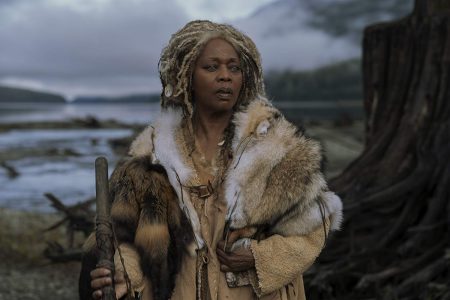
WOODARD: And we always had to be at least an hour and a half outside of civilization. Then, sometimes we’d drive another half an hour, so we’d be two hours out ‘cause you couldn’t see anything modern, like no overhead lines, or anything like that. It was like going on an expedition. You didn’t even make acting choices. You got on all your gear, and they’d say, “Okay, go up the waterfall.” You’d have some lines to say, but all you were doing was just trying not to fall into the waterfall. I had put in the universe that I wanted something adventurous and I wanted something I didn’t know how to do, but I forgot to tell the universe the location. I wanted the Caribbean. I can’t do that wintery stuff. I had an acting teacher called Rose Schulman who always talked about body, face, eyes, so that when you receive something, your response happens in your body first, then it comes onto your face, and it’s out of the eyes. No matter what somebody says, you know what they mean by looking into their eyes. So, to not have your eyes, we all had to make it up. We spent that month trying to find our individual expression of how to act without using the mirror of the soul. How do you do that with your ears? How do you do that with other parts of your body? There was a learning curve on that. The task was, how do I communicate, when I so depend on my eyes on camera?
And then, you get to go back and do it all again for Season 2.
WOODARD: I’m going back, as soon as it gets as cold as it can get. I’m going in mid-January to Toronto, this time. It doesn’t even have that Pacific current.
HODGE: We start [City on a Hill] back up, between Boston and New York, in January, as well. The winters are nothing nice.
Clemency is now playing in theaters.
https://collider.com
Christina Radish





